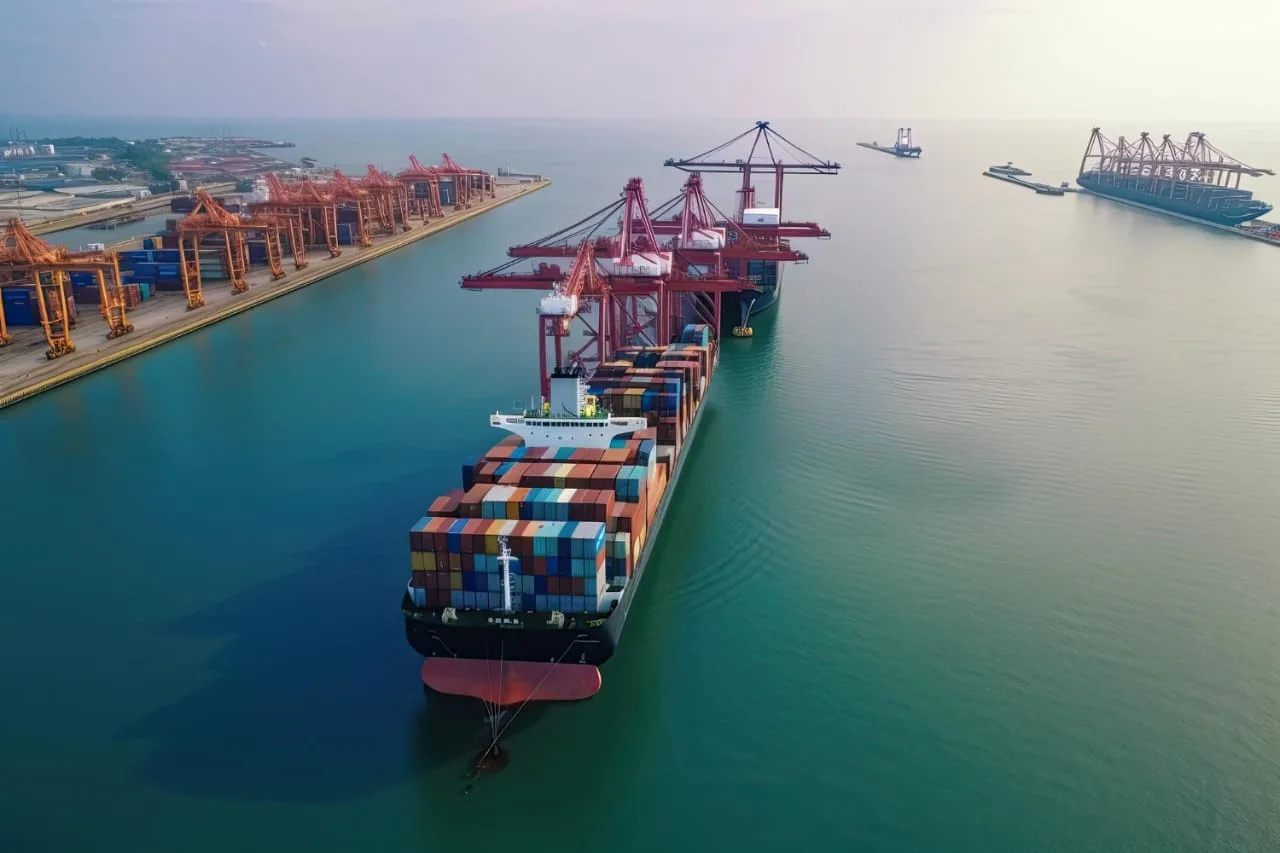UK customs clearance for EU imports: a concise guide

Since Brexit, moving goods from the EU into Great Britain (England, Scotland and Wales) requires full customs formalities. You’ll need the right registrations, accurate data, and a clear plan for VAT, duty, and any product controls. Northern Ireland has different rules under the Windsor Framework. This shortened guide highlights what to do, who does it, and how to avoid delays and unexpected costs.
Map your route and responsibilities
- Destination: Great Britain follows UK customs rules. Imports directly into Northern Ireland from the EU are generally treated like intra‑EU movements, with different processes.
- Importer of record: The named importer is legally responsible for the customs declaration, licensing, and taxes. Align this with your contracts and invoice.
- Incoterms: Set who handles clearance and costs.
- DAP to GB: UK buyer is importer and pays duty/VAT.
- DDP: EU seller handles UK import; they usually need a GB EORI, a UK VAT number if selling domestically, and a UK broker.
- FCA beats EXW for road freight, reducing pickup/export issues.
Get core registrations and accounts in place
- GB EORI: Mandatory for the party lodging the UK import declaration. Apply on GOV.UK.
- CDS access: The UK Customs Declaration Service is where import entries are filed. Your broker handles this; self-filers need software and permissions.
- Duty deferment account: Pay customs duty and import VAT monthly by direct debit. A guarantee waiver is often available.
- Postponed VAT Accounting (PVA): If UK VAT‑registered, account for import VAT on your VAT return instead of paying at the border. Download monthly PVA statements.
- GVMS: For roll‑on/roll‑off routes and other pre‑lodgement ports, the haulier must create a Goods Movement Reference linking all declarations to the vehicle.
- IPAFFS: For animals, animal products, plants and plant products, pre‑notify consignments and upload health certificates.
- Safety and Security (S&S GB): Entry Summary Declarations are required for EU‑to‑GB imports. Carriers or their reps submit these before arrival; confirm who files and the cut‑offs.
Classify goods and calculate taxes
- Commodity codes: Use the UK Trade Tariff to assign the correct code. It drives duty rates, VAT, licences, SPS controls and trade remedies.
- Duty: Check the UK Global Tariff. Many industrial goods are zero duty, but not all.
- Customs value: Start with the transaction price and add freight, insurance to the GB border, and certain commissions, assists or royalties. Align valuation with your Incoterms.
- VAT: Typically 20 percent (or reduced/zero rates). Calculated on customs value plus duty and certain charges. Use PVA to protect cash flow.
Claim zero duty under the UK–EU Trade and Cooperation Agreement
You can usually claim zero duty on EU‑origin goods if you meet the TCA rules of origin.
- Evidence: The EU exporter adds a statement on origin to the invoice or another document. Above €6,000, they generally need a REX number; below that value, no number is required. Alternatively, claim based on importer’s knowledge if you hold detailed proof.
- Product‑specific rules: Each code has a rule (for example, change in tariff heading or a limit on non‑originating inputs). Simple repacking or minor assembly does not confer origin.
- Records: Keep origin evidence and supplier declarations where relevant. HMRC can audit claims for several years.
- Timing: Claim at import in CDS, or reclaim overpaid duty later within the time limits.
Licences, product standards and SPS controls
- SPS checks: Under the Border Target Operating Model, medium‑ and high‑risk animal products, plants and plant products require IPAFFS pre‑notification, health certificates from EU authorities, and risk‑based checks at Border Control Posts. Low‑risk categories have lighter touch but may still need pre‑notification. Build in time and budget for BCP bookings and charges.
- Controlled goods: Firearms, certain chemicals, waste, cultural goods, ozone‑depleting substances, drug precursors, and CITES‑listed items need licences or permits. Sanctions and dual‑use rules may apply even for civilian end‑uses.
- Product compliance: Ensure goods meet UK safety rules. The UK recognises CE marking for many sectors placed on the GB market (with sectoral exceptions). Confirm labelling, documentation and UK‑based responsible persons where required.
- Trade remedies and quotas: Some goods face anti‑dumping duties, safeguards or tariff quotas. Check the UK tariff and Trade Remedies Authority notices.
Choose your border model and representation
- Pre‑lodgement (GVMS) ports: Common on ro‑ro routes like Dover and Holyhead. Declarations are pre‑lodged; vehicles are green‑ or orange‑routed for checks.
- Inventory‑linked ports: Typical for containerised freight (Felixstowe, Southampton, London Gateway). Goods go into temporary storage until a matching import clearance is complete.
- Transit (CTC): Move EU goods to an inland UK site before clearing import. Useful for groupage and ro‑ro. Requires a transit declaration, guarantee, and authorised consignee or office of destination.
- Representation: Most traders appoint a customs broker. Under direct representation you remain liable; indirect representation shares liability, which many brokers avoid. Set this out in your contract.

Prepare accurate documents and data
- Commercial invoice: Include seller/buyer details, importer EORI, Incoterms and place, invoice/date/currency, clear descriptions, commodity codes, origin, quantities and weights, prices and totals, and any discounts.
- Packing list: Package counts, marks and numbers, net/gross weights by package.
- Transport docs: CMR (road), bill of lading (sea), airway bill (air).
- Proof of origin: Correctly worded statement on origin, or importer’s knowledge file.
- Health and phytosanitary certificates: For SPS goods, obtain from EU authorities and pre‑notify in IPAFFS within required windows.
- Safety and security: Ensure the ENS data matches your commercial documents.
Make the import declaration
- Most standard imports use a full frontier declaration in CDS. Your broker will capture parties, goods details, origin and any preference claim, valuation method and adjustments, and taxes/payment terms (PVA or deferment).
- Special procedures (for example inward processing, temporary admission, returns) require the right authorisations and procedure codes. Simplified declarations and entry in declarant’s records are available to authorised traders.
Arrival, checks and release
- At GVMS ports, the haulier presents the GMR and follows the system’s routing. At inventory ports, the terminal holds cargo until clearance matches.
- SPS consignments may be directed to a Border Control Post for documentary, identity or physical checks. Expect handling, BCP and storage charges if delayed.
- When customs and SPS checks are cleared and payment terms accepted, goods are released for delivery.
Account for VAT and keep records
- PVA: Report and recover import VAT on your VAT return in the period of import. Download monthly PVA statements to support your return.
- If you do not use PVA, download your monthly import VAT certificates to claim input tax.
- Keep customs declarations, invoices, transport documents, origin evidence, licences and VAT statements for audit. Many businesses retain six years of records.
Useful reliefs and special regimes
- Inward Processing: Suspend or relieve duty and VAT on goods you process and re‑export, or pay on the processed outcome if released to free circulation.
- Temporary Admission: Relief for goods imported temporarily for exhibitions, samples, or professional equipment, subject to conditions.
- Returned Goods Relief: Duty and VAT relief on UK goods coming back within time limits and remaining essentially unchanged.
- Customs warehousing and end‑use: Helpful for staging inventory or accessing specific duty rates; both require authorisation and control.
Common pitfalls to avoid
- Treating EU dispatch as EU origin: If goods don’t meet TCA origin rules, UK Global Tariff duty applies.
- Weak origin evidence: Missing or incorrect statements on origin invalidate preference claims. Train suppliers and include wording in purchase orders.
- Data mismatches: Inconsistencies across ENS, invoices and customs declarations trigger holds. Standardise descriptions, HS codes, weights and parties.
- SPS under‑planning: No pre‑notification, wrong certificates or missed BCP bookings are top causes of delay. Build clear timelines and responsibilities with suppliers and hauliers.
- Over‑promising DDP: EU sellers offering DDP without UK infrastructure (EORI, VAT, broker, deferment) risk failed deliveries and penalties.
- Groupage complexity: One non‑compliant consignment can delay an entire trailer. Consolidate carefully and separate SPS goods where possible.
Northern Ireland in brief
Under the Windsor Framework, most direct EU‑to‑NI movements do not require UK customs declarations, though product standards and SPS rules still apply. GB‑to‑NI movements use simplified processes for eligible traders and “not at risk” goods, supported by the UK Internal Market Scheme and the Trader Support Service. VAT in NI follows UK rules with certain EU alignments for cross‑border goods. Always check the current guidance for your commodity.
Quick checklist
- Confirm Incoterms and the importer of record in contracts.
- Obtain GB EORI; set up CDS, PVA and (if useful) a deferment account.
- Classify goods; check duty, VAT rate, remedies and any quotas.
- Confirm origin; secure statements on origin or build importer’s knowledge.
- Check licences and SPS rules; register for IPAFFS if needed.
- Choose border route (GVMS or inventory) and consider transit for ro‑ro.
- Prepare invoice, packing list, transport docs and matching data.
- Ensure the carrier files the safety and security declaration.
- Lodge the customs declaration; claim preference; plan payments.
- Book BCP checks if required; budget for port and BCP charges.
- Reconcile PVA or VAT certificates; file and retain records.
Final tips
Standardise your data, work with experienced brokers and hauliers, pilot one route before scaling, and keep an eye on evolving UK border policy. With the right setup, EU‑to‑GB imports can clear smoothly, predictably and without surprises.
For more information, visit https://dcplogisticsgroup.co.uk or contact DCP Logistics Group from London.
